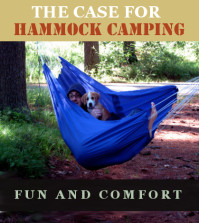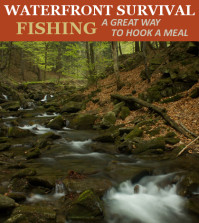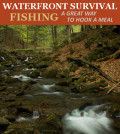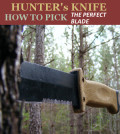The Hunter’s Knife: Pick the ‘Perfect’ Blade
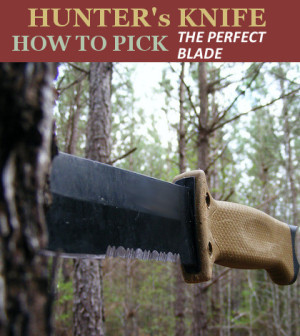
Hype is a devilish thing. It can cause aspiring outdoorsmen and hunters to buy that which is most shiny and packed with more bells and whistles than a Winnebago. Believing the hype can feel exciting when unboxing that seductive new toy from the land of Amazon.com –but when put to the test in the field, that hype-sold toy can cause aggravation and ruin your whole adventure.
Hype is a crafty thing, especially in the world of knives. Why? Knives have an allure, being that it is a tool with many shapes, sizes, and uses. It’s easy to market and sell a sleek-looking blade, and it’s easy for us to forget that old requirement for a good knife –will it get the job done?
All hunters, outdoors enthusiasts, and even survivalists need knives. Is there such thing as a one-blade-option? No. Is there such thing as a good knife that will get the job done? Absolutely. You just have to know what to look for, and why you might come to need its noble service.
Here are 3 tips on picking your ‘perfect’ hunting knife, so you can quench those lies from the hype-devil.
#1: Picking the right length.
Truth be told, there’s nothing grittier and attractive than a foot-long Rambo knife. However, there’s also nothing more aggravating than a knife that is simply too long for the job. For hunting, it’s best to keep it small.
If you want to know the secrets of easy living in the outdoors, never underestimate the advice of the seasoned old-timer. I’ve heard a saying many a time, often uttered by hunters who have several decades of harvesting game behind them: “The larger the knife, the larger the fool.”
Too large of a knife will be difficult to handle, clumsy, dangerous, and is far more likely to accidentally slice something that ought not to be sliced. This is why it is often best to keep your hunting knife in that 4 to 5-inch length.
It’s not what you can cut. When cleaning game, it’s what you don’t accidentally cut that makes the difference.
#2: Stainless steel is a gift.
In the world of blades, from axes to pocket knives, the types of metals composing them are very diverse. This is often why there is such confusion surrounding the topic, allowing for that ol’ hype devil to stick his nose in our business.
Simply put, you want your blade to be a type of metal that will work best for the job at hand. For hunters, what might you need out of your knife steel?
- First, you need your blade to hold a shaving-sharp edge.
- Second, you need to be able to sharpen it with relatively convenient ease.
- Third, you need it to have a certain level of corrosion resistance.
- Fourth, you need a certain level of strength (but not the same level as a wood-chopper).
This, of course, is not for a ‘bushcraft knife’ or a blade for camping and survival purposes, but for a hunting application.
Also, just to state my opinion, it is best to stay away from blades that require coating. Certain types of finishes can become problematic, as they are often difficult to clean –and will gunk your perfectly good sharpening stone! Oh the humanity!
For this reason, it’s not always best to go with hi-carbon steel knives for the simple fact that most of them are coated. While these blades may hold an edge until Armageddon, if there is no protective finish or coating, then expect corrosion (rust). Bluing often alleviates this issue –but even this falls short if the knife is not kept dry, which can sometimes be difficult to do in the field.
One of my favorite types of steel is 154CM. Not only is it a stainless steel corrosion-resistant type, but also it maintains an edge unusually well. On the cheaper side, 440 is a workable stainless steel blade used by some affordable brands. While 440 may not hold an edge like most high-quality steels, it can be sharpened with uncommon ease. The downside to 440 is its strength –however, you probably shouldn’t be chopping down trees with your hunting blade.
#3: The fewer the bells and whistles, the easier it will be to use.
Believe it or not, many hunters will even carry a box-cutter utility knife into the field for gutting purposes. Of course, this can be a tricky method –but it just goes to show that ease-of-use is king. If you have a gut hook, cross guard, half-serrated blade, and fancy dancy ‘survival compartment’ in the handle, then you’ve got to learn how to use such a feature-filled knife.
However, if you simply stick with a drop-point or spear-point blade, a Nessmuk-style Skinner, and combined with a full tang and a plain grip… then it will not take long for you to learn how your knife behaves. Simple knives are predictable, safer, and those added bells and whistles won’t get in the way of performing the task at hand.
Also, keep in mind that the wider the blade profile, the easier it will be used as a Skinner. The narrower the blade profile, the easier it will be used for gutting. Picking a lovely middle-point between these two will give you the most out of your hunting knife. It may not be preferable for others, but if it works for you –then it is truly your ‘perfect’ blade for your tasks in the great outdoors.

